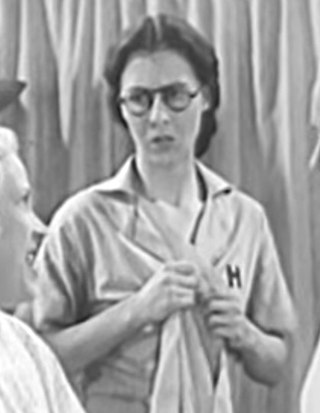
Fritz Feld was a German-American film character actor who appeared in over 140 films in 72 years, both silent and sound. His trademark was to slap his mouth with the palm of his hand to create a "pop" sound.

Jean Del Val was a French-born actor, also credited as Jean Gauthier and Jean Gautier.

Trevor Bardette was an American film and television actor. Among many other roles in his long and prolific career, Bardette appeared in several episodes of Adventures of Superman and as Newman Haynes Clanton, or Old Man Clanton, in 21 episodes of the ABC/Desilu western series, The Life and Legend of Wyatt Earp.

Francesco Giuseppe "Frank" Puglia was an Italian actor. He had small, but memorable roles in films including Casablanca, Now, Voyager and The Jungle Book.

Jimmy Conlin was an American character actor who appeared in almost 150 films in his 32-year career.

Nestor Paiva was an American stage, radio, film and television actor of Portuguese descent. He performed in over 400 motion pictures either as an extra, a bit player, or as a significant supporting character. He also appears in such roles in a variety of television series produced during the 1950s and early 1960s. Among his notable screen appearances is his recurring role as the innkeeper Teo Gonzales in Walt Disney's late 1950s televised Spanish Western series Zorro, as well as in its adapted theatrical release The Sign of Zorro (1958). Paiva also appears as the boat captain Lucas in the Creature from the Black Lagoon (1954) and in that horror film's sequel Revenge of the Creature (1955).

Philip Van Zandt, sometimes billed as Phil Van Zandt, was a Dutch-American actor of stage, film, and television. He made nearly 250 film and television appearances between 1939 and 1958.

Olaf Hytten was a Scottish actor. He appeared in more than 280 films between 1921 and 1955. He was born in Glasgow, Scotland, and died in Los Angeles, California from a heart attack, while sitting in his car in the parking lot at 20th Century Fox Studios. His remains are interred in an unmarked crypt, located in Santa Monica's Woodlawn Cemetery.

Frank Orth was an American actor born in Philadelphia. He is probably best remembered for his portrayal of Inspector Faraday in the 1951-1953 television series Boston Blackie.

Chester Lamont Clute was an American actor familiar in scores of Hollywood films from his debut in 1930. Diminutive, bald-pated with a bristling moustache, he appeared in mostly unbilled roles, consisting usually of one or two lines, in nearly 250 films.

Charles Judels was a Dutch-born American actor.

Jack Mower was an American film actor. He appeared in more than 520 films between 1914 and 1965. He was born in Honolulu and died in Hollywood.

Jack Rice was an American actor best known for appearing as the scrounging, freeloading brother-in-law in Edgar Kennedy's series of short domestic comedy films at the RKO studio, and also as "Ollie" in around a dozen of Columbia Pictures's series of the Blondie comic strip.

Ralph Dunn was an American film, television, and stage actor.

William Edmunds was an Italian-American stage and screen character actor, typically playing roles with heavy accents, most notable as Mr. Giuseppe Martini in It's a Wonderful Life.

Mary Field was an American film actress who primarily appeared in supporting roles.

Ernő Verebes was a Hungarian-American actor who began his career in Hungarian silent films in 1915. During his film career he worked and lived in Hungary, Germany and in the United States. He was born into a Hungarian emigrant family in New York, but his family later returned to Austria-Hungary.

William M. Newell was an American film actor.

Robert Emmett Keane was an American actor of both the stage and screen.

Joseph E. Bernard was an American character actor of the 1930s and 1940s.





















